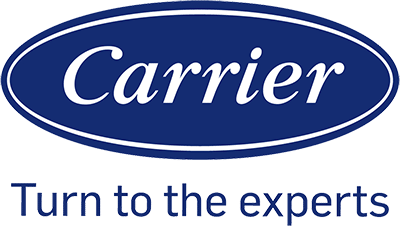Understanding the Basics of HVAC Coil Cleaning
Cleaning the coils of an HVAC system ensures efficiency, improves air quality, and reduces energy consumption. Evaporator and condenser coils must be kept clean to avoid costly repairs and maintain optimal performance.
Role of Coils in HVAC Systems
The evaporator coil absorbs heat from the air inside a building, while the condenser coil releases that heat outside. These coils facilitate heat exchange, making them crucial for the HVAC system’s operation. Without clean coils, the HVAC system works harder, leading to higher energy consumption and potential breakdowns.
Common Contaminants and Their Impact on Coils
Coils can collect dust, dirt, mold, and debris over time. These contaminants act as insulation, making it harder for the coils to transfer heat. Dust, for example, can block airflow, reducing efficiency. Mold can affect air quality, causing possible health issues. Dirt and debris can also lead to corrosion, shortening the coils’ lifespan.
Benefits of Regular HVAC Coil Cleaning
Regular cleaning of HVAC coils improves system efficiency. Clean coils allow for better heat exchange, reducing energy consumption. This not only lowers utility bills but also helps the environment. Clean coils also improve air quality, as fewer contaminants are circulated through the air. Regular cleaning helps avoid costly repairs, extending the life of the HVAC system.
Executing Coil Cleaning Processes
Proper coil cleaning protects HVAC systems, avoiding costly repairs and ensuring efficient operation. Techniques, tools, and chemicals play vital roles in maintaining both evaporator and condenser coils.
Steps for Cleaning Evaporator and Condenser Coils
Cleaning involves both evaporator coils and condenser coils, crucial for removing dirt, grease, mold, and corrosion. First, switch off and disconnect the HVAC unit to ensure safety. Then, gently remove any surface debris using a brush or vacuum.
Next, spray the coils with a coil cleaner. Let it sit for a few minutes as directed on the product label. After this, rinse the coils thoroughly with water to remove loosened dirt and chemicals.
Finally, inspect the coils for any remaining debris or damage. Repeat the cleaning process if necessary. For best results, this routine should be part of a regular preventative maintenance schedule.
Choosing the Right Coil Cleaning Tools and Chemicals
Selecting proper tools and chemicals is important for effective cleaning. Use a soft brush or a special coil cleaning brush to remove loose particles. Vacuum cleaners with soft bristle attachments are also effective.
For coil cleaners, ensure you pick ones suitable for your system type. Alkaline-based cleaners are strong and good for removing heavy grease but must be rinsed well to avoid corrosion. Acid-based cleaners are effective but should be used cautiously to prevent damage to metal components.
Avoid harsh chemicals that can damage the coils. Non-corrosive and biodegradable options are safer for regular use. Always follow the manufacturer’s instructions for handling and applying these products.
Identifying and Preventing Potential Coil Damage
Identifying signs of potential coil damage early can save costs. Look for corrosion, which often appears as rust or discoloration on the coils. Mold or mildew presence requires immediate attention as they can lead to foul odors and health issues.
To prevent damage, avoid using pressure washers as they can bend the delicate fins on the coils. Use gentle tools and cleaning solutions. Regular maintenance, including inspections and cleanings, can prevent buildup and deterioration.
Ensuring coils are dry post-cleaning reduces the risk of corrosion. Proper preventative maintenance extends the lifespan of the HVAC system and keeps it running efficiently.
Preventative Measures and Maintenance Best Practices

Regular upkeep of HVAC systems prevents costly repairs and ensures optimal performance. Key practices include routine inspections, maintaining air filters and ducts, and assessing energy efficiency.
Scheduling Regular Maintenance and Visual Inspections
Regular maintenance is crucial. HVAC systems should be checked at least twice a year, ideally before summer and winter. A visual inspection helps identify issues like leaks, rust, and debris. This step alone can prevent major problems.
Maintenance activities include checking the thermostat, refrigerant levels, and electrical connections. Hiring an HVAC professional ensures that the job is done thoroughly. This routine often includes cleaning the coils, lubricating moving parts, and tightening any loose components.
Understanding the Role of Air Filters and Ducts
Air filters and ducts play a vital role. Clean filters improve indoor air quality and system performance. They should be replaced every 1-3 months, depending on usage and type. Dirty filters can lead to blockages and strain on the HVAC system.
Ducts should be inspected for dust and debris. Clean ducts ensure efficient airflow and reduce contaminants in the air. Professional duct cleaning may be necessary if there are signs of mold or excessive dust, impacting overall system efficiency.
Evaluating System Performance and Energy Efficiency
Evaluating the HVAC system’s performance involves analyzing its energy efficiency. Energy efficiency can be tracked by monitoring utility bills and checking the system’s SEER (Seasonal Energy Efficiency Ratio) rating.
An efficient system reduces energy costs and environmental impact. Regular maintenance helps the system run smoothly and prevents unexpected breakdowns. Keeping detailed logs of maintenance activities assists in tracking performance and planning future upkeep.
Regular coil cleaning routines also contribute to energy savings. Dirty coils make the system work harder, consuming more energy. Keeping coils clean ensures maximum heat transfer and efficient operation.




